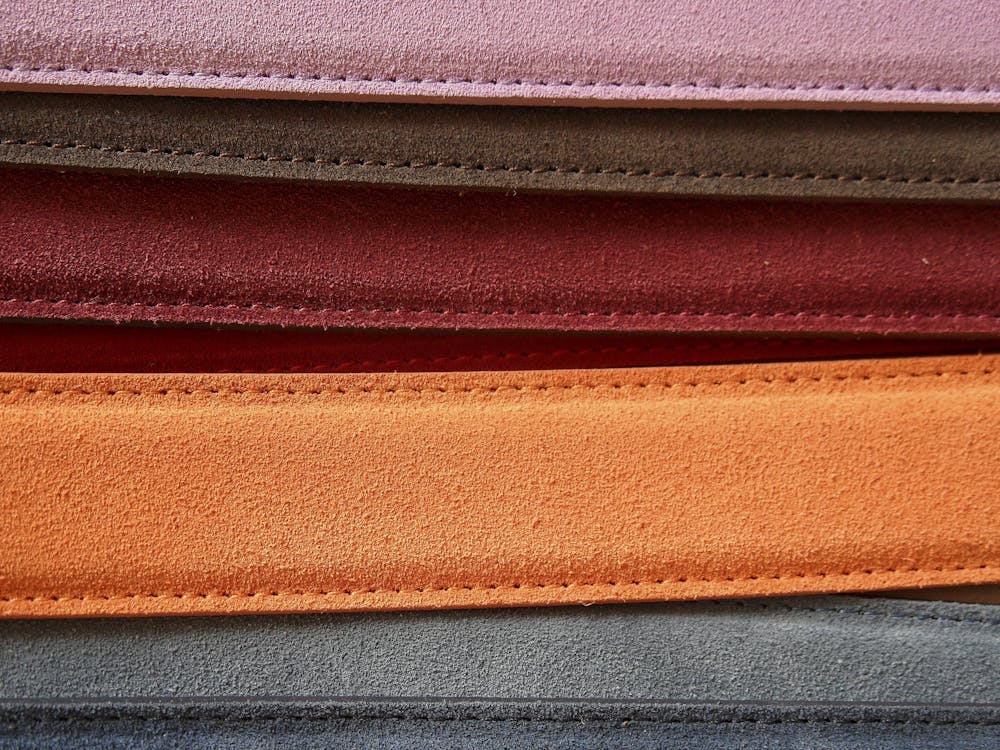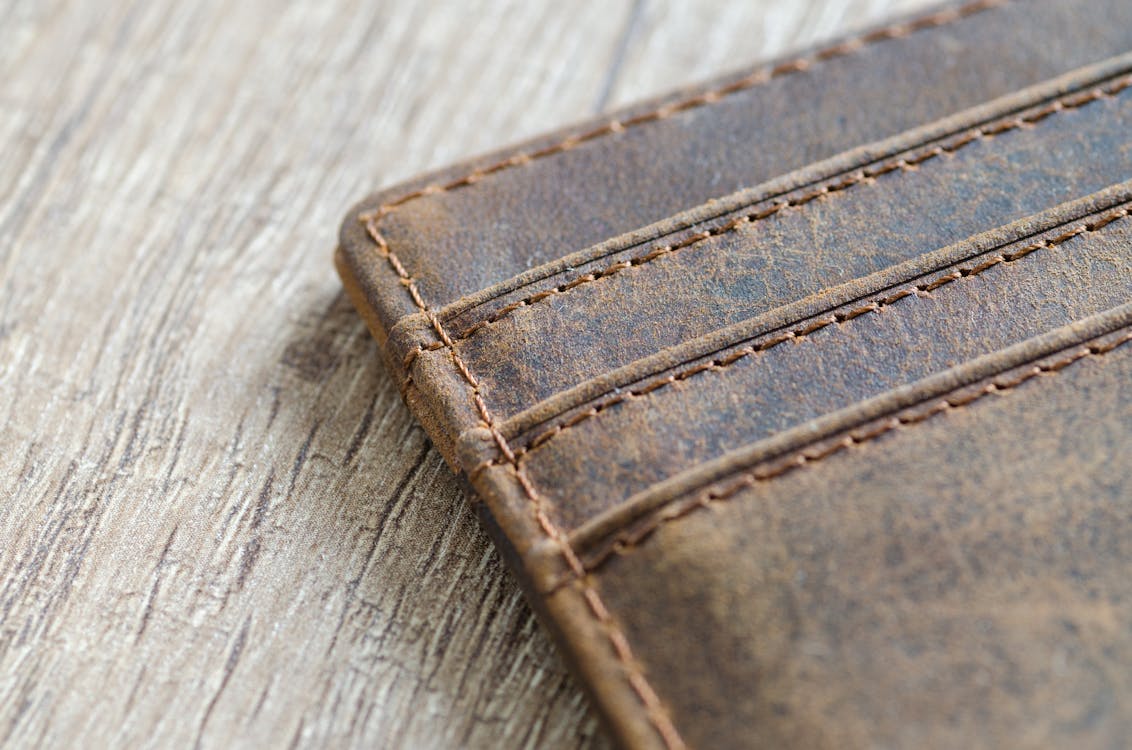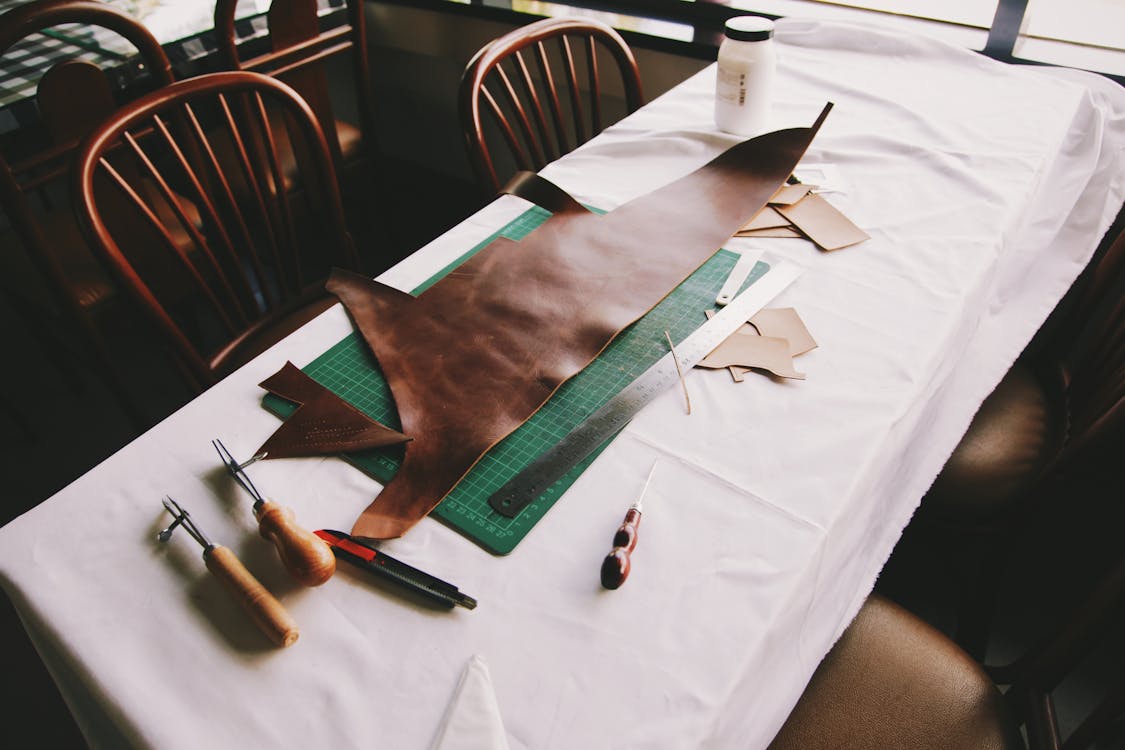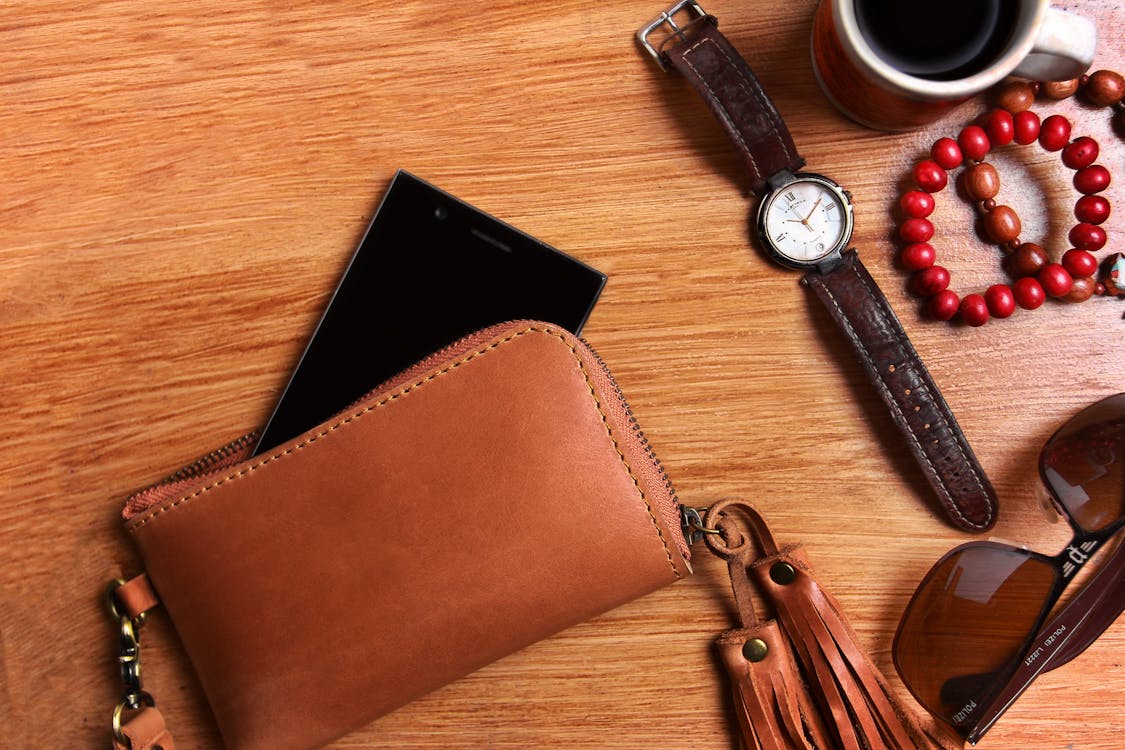Vegan Leather Misconceptions: 7 Common Misconceptions About Faux Leather

Leather is one of those timeless materials that never goes out of style, but with the rise of faux leather and replica goods, it’s surrounded by a cloud of misconceptions.
The market is flooded with faux-leather options, and while they might seem like an easy choice, they often contribute to misunderstandings.
In this blog, we’ll uncover 7 common misconceptions about faux leather that might reshape your thoughts about this long-lasting material. Let’s get started!
What is Faux leather?

Faux leather, also known as vegan leather or synthetic leather, is an alternative to animal leather. This option is created for people who want the look without the harm.
It often uses petroleum-based compounds and leaves animals alone. You might see it labeled as PU (polyurethane) or PVC (polyvinyl chloride), both types of plastic. Some call it man-made leather because it skips natural hides.
7 Common Misconceptions & Myths About Faux Leather
People often raise an eyebrow when they see “vegan leather” tags on shoes, bags, or jackets. You might have heard a friend say it’s flimsy. Someone else might have said it harms the environment more than real leather. These bits of gossip can create doubt, right?
So, in this section, let's look at these seven major misconceptions about this animal-free material.
1. Vegan Leather Falls Apart Right Away

One of the biggest claims is that this type of leather breaks down faster than real leather. Some folks think it peels, cracks, or looks damaged within months. Is that accurate?
Short answer: no.
Here are a few reasons why.
-
Advanced leather production methods. Thanks to technology, high-quality synthetic leather can now withstand normal wear and tear. They use a new production process that lets them do this. It holds up to daily use in most cases. Some people wear vegan leather jackets for years without major damage.
-
Doesn't need special care. This material often doesn’t need the same special care that animal hides demand. Traditional leather can develop mold from water, especially if you live in humid conditions. That isn’t a huge risk with synthetic or plant-based blends. Versions made from pineapple leaves, mushrooms, and recycled materials are treated to prevent this. They often have water-resistant layers. These help stop moisture damage.
Keep in mind that some budget-friendly versions might be less sturdy. That can happen with any material, though. Low-end animal leather also fades or tears if it’s poorly processed. Of course, quality matters in both categories.
2. Vegan Leather Harms the Environment More Than Real Leather

Some critics say real leather is a “waste-saving byproduct” of the meat industry. They claim animal hides would just get tossed if they weren’t turned into jackets or handbags. They might mention that fake leather depends on plastics or chemicals. So, who’s right?
Actually, it's not all black and white.
More demand for leather can lead to more intense animal agriculture. That means more water use, more feed, and more emissions. Tanning also involves toxic substances.
Vegan leather doesn’t get a free pass, though. Some versions rely on PVC or polyurethane. Those materials are petroleum-based and can release fumes during manufacturing. However, they do avoid the methane problem from large-scale animal farms. They also don’t involve shipping tons of skins around the globe, which lessens its environmental impact.
In some cases, those advantages outweigh the cons of plastic. It depends on the brand and the specific materials used. So, the best approach is to pick high-quality products, like what we have here at Grace's Bags. These products are more sustainable since they use fewer toxins and more renewable sources.
3. It’s All Cheap Plastic
Faux leather has existed for decades. Pleather, one of the first versions, showed up in the 1960s. Early pleather was mostly plastic-based. That gave it a reputation as stiff and tacky. People saw it crack easily. They noticed a fake shine that looked unnatural.
But times have changed. Brands now work with pineapple leaf fibers (Piñatex), cork, and other plastic-free options. Some brands combine fruit byproducts and minimal synthetic binders. Some versions even have that subtle grain that people like in real leather.
There are, of course, versions that rely heavily on plastic – but not necessarily cheap ones. High-quality "plastic" options can still be a more sustainable choice. You just have to be aware of how they're manufactured. Make sure the brand you're buying from is transparent about that.
So, it isn’t all plastic these days. There’s a wide world of plant-based options.
4. Vegan Leather Is Way Too Expensive

Someone might see a cork wallet that costs a bit more and think it’s overpriced. Another person might notice a mushroom leather tote that’s pricier than cheap pleather. Does that mean everything is out of budget? Not at all.
Here are some things you should know.
-
The price for faux leather varies. Some low-cost versions are cheaper than real leather. Others made with special plant fibers can cost more. Why? Processes for pineapple or mushroom leather can be new or less streamlined. R&D is still happening, so production might not be as large-scale as traditional tanneries.
-
Real leather often has a larger price tag. High-end brands charge extra for unique finishes on their natural leather. A smaller artisan that uses top-tier animal skin will also charge accordingly. Plant-based eco leather can cost less, about the same, or a bit more. It depends on the process. If you want an ethically produced, high-quality item, that can have a higher price.
-
Many brands create faux leather on a budget. For instance, here at Grace's Bags, we make sure our prices fit all budgets, without skipping on the quality. Our sustainable leather products are all sold at an accessible price. There are many other brands that use PVC leather and imitation leather that are a fracton of the cost. So, it's always good to compare before you buy.
Remember, price alone isn’t a sign of quality or ethics. Some vegan leather lines in the fashion industry keep costs low through innovative materials or efficient manufacturing. Others focus on novel processes that push them to charge more, at least for now.
5. It Lacks Style and Versatility

Many people assume that anything labeled “vegan” will look basic. They think it can’t match the natural beauty and timeless style of authentic leather. They worry about color choices. That might have been a concern years ago, but times have changed.
Well, faux leather comes in countless finishes.
Some have a matte sheen. Others have a subtle grain. Modern processes make it possible to mold this material into different shapes.
These options let you explore different aesthetics without giving up on your personal vibe. In many cases, people don’t notice the difference until you mention it’s vegan. That’s how far technology has come.
6. It’s Automatically Eco-Friendly
Slapping a “vegan leather” label on a bag might suggest it’s zero waste. That can be misleading.
Some producers do rely on fossil-fuel-based layers. They don’t always reveal the full list of components. A few might use a small fraction of fruit fiber or cork, then fill the rest with standard plastics. That can trick consumers into thinking they’ve picked a green product.
On the flip side, many companies do share the details. They might use vegan leather but rely on wax coatings or other methods to reduce or remove plastic from the recipe.
Still, the fact that there’s no animal hide means less direct involvement in factory farming. That helps reduce the impact on water consumption and methane emissions. It also bypasses harsh tanning processes. So, many people see vegan leather as a better option, though it’s not always 100% clean.
7. Real Leather Is Always the More Ethical Choice

Some people say animal hides are leftover scraps. They think using them is a form of recycling.
But many activists counter that argument. They believe the leather industry supports an endless cycle of slaughter. Some organizations call leather a “co-product” instead of a “byproduct.”
The logic is that sales of hides encourage big agriculture to continue raising more animals. Others point to the tanning stage. That involves harmful chemicals and can hurt local communities, even in supposedly eco-friendly destinations.
Vegan leather eliminates that part of the equation. No animals are harmed directly for the material. Production still has an impact, but it doesn’t include the greenhouse gases or water usage tied to large-scale livestock.

For many shoppers, that matters a lot. They prefer to skip animal-based products altogether. Others see real leather as a “natural” material. They might say it’s biodegradable, though that depends on how it was tanned. Some real leathers break down, but not those tanned with lots of chemicals.
Remember: ethics is personal.
Some believe using any animal product is a problem. Others feel real leather is acceptable because the animal was raised for meat. Another group finds a middle ground, choosing secondhand leather. Everyone has a different view.
The key point is that real leather isn’t automatically kinder or greener. Vegan leather also isn’t a halo product. Each has pluses and minuses. That’s why many people read labels, ask brands about their practices, and aim for quality items that last longer.
Support Vegan Leather Today
As you can see, there's nothing wrong about using faux leather, especially fully vegan leather. You deserve the best vegan leather gear.
And well, Grace’s Bags check those boxes. Our faux leather products look modern and feel amazing. We use only the best synthetic materials, making sure that no animals are harmed in the process.
We care about quality and ethics. Our customers come first – here at Grace’s Bags. Shop our collection now!
FAQs
1. What is vegan leather made from?
Some brands use plant fibers. Others rely on recycled plastics. Each blend is unique. Many skip animal hides completely.
2. Does vegan leather need special care?
Basic cleaning works for most materials. Just wipe with a damp cloth. No harsh chemicals needed. Always let items dry in open air.
3. How long does vegan leather last?
It can last years with normal use. Some high-grade versions rival animal hides. Quality and care matter, of course.
4. Does it feel stiff?
Not always. Many types feel soft and flexible. Texture depends on the manufacturing process.
5. Are plant-based leathers better than plastic ones?
Many prefer plant-based blends. They often use agricultural waste. That can reduce plastic content. Either option spares animals from the unneccessary harm caused by the genuine leather industry.











Hinterlassen Sie einen Kommentar